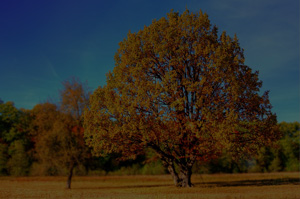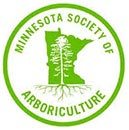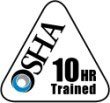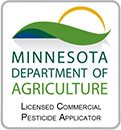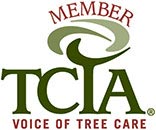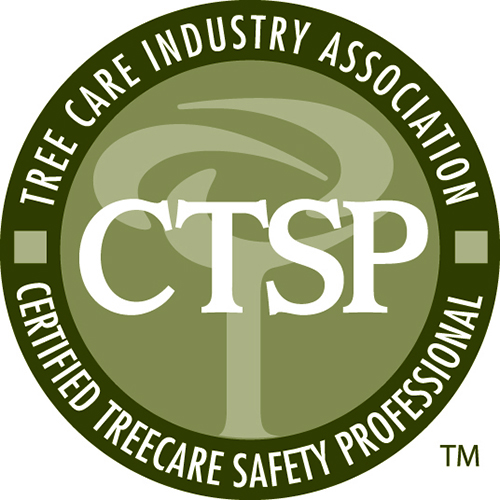We all know the importance of trees and the benefits that they can bring to the earth. What is less obvious is the small things we are doing to harm trees. Many of which you might think are actually beneficial. To make sure that you aren’t accidentally killing your trees, read over this list before you give them care.
1. Staking or Guying a Tree Too Much
Staking/Guying: Using stakes and rope to support a tree
Most trees don't need support, and if they do, they only need it for a short amount of time. Staking or guying can cause abnormal trunk growth, bark damage, girdling, or cause a tree to become top heavy.
2. Girdling a Tree
You may think that you are doing your tree a favor by wrapping the bottom of it with plastic. The idea behind this is that it will protect the tree from lawn mowers or weed whackers, but it actually strangles the tree. The plastic covering at the base of a tree trunk leads to a slow death. If your goal is to protect your tree, you would be better off surrounding the tree with mulch which will prevent weeds from growing and help retain moisture.
3.Putting Mulch Too Close To A Tree’s Trunk
Putting mulch too close to the trunk of a tree covers the root flare and causes the tree to suffocate. To prevent this, experts say that you should keep the mulch six inches away from the trunk of a young tree and a foot away from mature tree trunks. Need mulch?
4. Hanging Bird Feeders with Screws or Nails
Anything that penetrates a tree’s bark puts it at risk for disease or insect infestation. It can also damage the cambium, the area beneath the bark where cells rapidly divide and increase the girth of the tree. Another problem with putting screws or nails in your tree is that the tree will grow around the object. This makes it dangerous to trim or cut down the tree at a later date.
5. Tying Your Dog To A Tree
Tying your dog to a tree may seem harmless, but it can damage the tree’s bark. A dog may jump and tug against the tree causing the bark to fall off. The bark is a tree’s first line of defense against disease and insects, so ruining this puts the tree in danger.
6. Pruning Your Tree in the Wrong Season
Pruning your tree in the wrong weather conditions can cause it to be weak and vulnerable. The best time to prune in Minnesota is early spring.
Many people think that fall is the best time to prune which is actually incorrect. Trees focus their energy on their roots during the fall as they build up nutrients for the approaching winter season. Any cuts from pruning during the fall months won’t have time to heal before the harsh winter arrives, leaving the tree exposed.
7. Filling Tree Cavities with Concrete
It is a common myth that you should fill a tree cavity to help its structural strength. Tree cavities are best healed by the tree itself.
8. Power Lines
Power companies do not allow trees to touch the power lines and they have little sympathy if you want your tree spared. If you have a tree near the power line, the company will force you to trim it or cut it down. If you are considering planting a tree underneath a power line, consider a tree that is small enough so that it's projected height is less than the height of the power lines.
9. Improper Pruning
If you are unsure of how to prune your tree or do not have the correct equipment, contact your local arborist. This is a very important chore and can kill the tree if done wrong.
10. Planting Too Many Plants or Trees
Planting too many plants or trees too close to each other will cause them to compete for food, water, and sunlight. This will cause some to flourish and some to die. Avoid this by strategically planting plants while accounting for a tree’s potential size.
11. Building or Covering the Roots
Storing harsh chemicals or building over a tree's roots will damage them and cause the tree to die. Think of a tree’s roots as their organ system. They are what keeps them alive and healthy and when the roots fail to work properly the tree will eventually decline and die. Avoid building a structure over tree roots, excavating on and around the tree trunk, parking or storing equipment over the root zone.
12. Salting Near The Tree
In places like Minnesota, it is important to salt in the winter to keep the roads clear, but getting this near your trees can be toxic. Soil with salt in it does not support life and therefore will kill off your trees, grass, and other plants.
13. Using Herbicides or Pesticides
These may keep away the weeds and pests, but they will harm your trees. It is best to put good mulch around the tree which will naturally prevent weeds.
The difficult part of tree care is knowing what is helping and what is hurting your tree. Do your research or contact your local arborist for the best practices on tree care.
